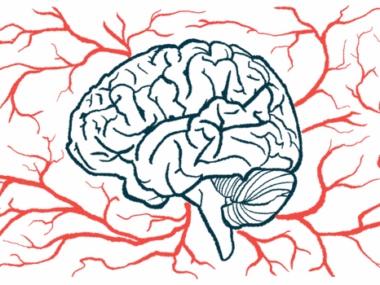Study Links Missing Gene to Severe Seizures in Angelman Children
Written by |

Epileptic seizures occur earlier and more frequently, leading to more hospitalizations, in children with Angelman syndrome due to a missing UBE3A gene, according to a retrospective analysis of a natural history study.
The study, “Clinical Characterization of Epilepsy in Children With Angelman Syndrome,” was published in the journal Pediatric Neurology.
Angelman syndrome is a complex genetic disorder that primarily affects the nervous system. The disease is caused by genetic defects in the UBE3A gene, which contains the instructions for an enzyme active in the brain. The gene’s function is to flag other proteins to be degraded, preventing their buildup.
Most cells in the body have both gene copies, one inherited from the mother and the other from the father, but in certain parts of the brain, only the UBE3A gene inherited from the mother is active.
Several genetic mechanisms can lead to the dysfunction or lack of the UBE3A gene. In the majority of Angelman cases, part of the maternal chromosome where the UBE3A gene is found (chromosome 15) is missing.
In a smaller percentage of cases, the maternal chromosome is present but inactive, or the patient inherited two copies of the chromosome from the father and none from the mother in a biological phenomenon called uniparental disomy. In other cases, the UBE3A gene may have mutations that alter its genetic code, impairing its function.
Overall, the underlying genetic causes (genotypes) of Angelman can be classified as deletion or non-deletion.
Epilepsy is often seen in patients with Angelman syndrome, and is one of the most significant symptoms of the disease. Typically, first epileptic seizures appear in the first three years of life.
However, whether the rate of epileptic seizures differs according to the underlying genetic cause of Angelman syndrome remains unknown.
In this study, a team led by researchers at Roche in Switzerland conducted a retrospective analysis of data from children and adolescents that took part in the Angelman Syndrome Natural History Study (NCT00296764), which followed patients for a period of five to 10 years.
Out of 302 patients enrolled in the study, all with a genetic diagnosis of Angelman, 265 patients up to 18 years old were included in the analysis. According to the genetic cause of the disease, 187 patients were included in the deletion group and 78 in the non-deletion group.
Seizures were registered by parents. The researchers also took into account any medications prescribed, including anticonvulsants, as well as the age of the first seizure.
Forty-six individuals (17%) did not report any seizures (8% of the deletion group and 38% of the non-deletion group). The remaining 219 patients reported at least one seizure before joining or during the trial. This occurred more often among those with a genetic deletion (91%) than those with non-deletion mechanisms (61%).
However, these results were influenced by patient age and length of follow-up during the trial.
When accounting for age, those in the deletion group were in general significantly younger at the time of their first epileptic seizure compared to those in the non-deletion group (2 years versus nearly 5 years).
Over half of the patients in the deletion group (75%) reported their first seizure before 3 years of age, compared with 28% of patients in the non-deletion group. A time-to-event analysis suggested that roughly all individuals whose underlying genetic cause for Angelman is a deletion eventually develop epilepsy, compared with about 70% of those with a non-deletion.
A time-to-event analysis refers to a set of methods to analyze the length of time until the occurrence of a well-defined event of interest, which in this case is seizures.
“In summary, individuals with deletion genotypes experience their first seizure earlier, and the overall prevalence of seizures in this group is higher than that of those with nondeletion genotypes,” the researchers wrote.
Using this same method of analysis, the team also found that “a plateau was reached for both deletion and nondeletion genotypes at about age eight years, at which point all individuals with deletion genotypes had epilepsy and about 30% of individuals with nondeletion genotypes remained epilepsy-free.”
Among the 219 patients with epilepsy, 54% were diagnosed with Angelman before their first seizure and 46% were diagnosed at the time of their first seizure or later.
Very frequent seizures — one or more per day — were higher in the deletion group than in the non-deletion group. For example, in patients 2 to 3 years old, very frequent seizures were seen in 16.2% in the deletion group versus 5.9% in the non-deletion group. Generalized motor seizures were the most prevalent, detected in 184 patients.
Prescriptions of anticonvulsants increased during the first six years of life for patients in the deletion group, stabilizing until the age of 15. For those in the non-deletion group, the mean number of prescribed anticonvulsants decreased from the ages of 2 to 6, increasing again at 11.
A total of 235 patients (89%) required hospitalization. Among patients who experienced at least one seizure, those in the deletion group were more frequently hospitalized compared to the non-deletion group, 54% vs 38%.
The risk of hospitalization due to seizures by age 2 was higher in the deletion group (18% vs 5%).
Overall, these results suggest that in pediatric Angelman patients with a genetic deletion, “seizures start earlier, are more frequent, require more anticonvulsants and hospitalizations, and are nearly universal by 8 years of age,” the researchers wrote.
“The detailed characterization of the clinical features of epilepsy in children with [Angelman syndrome] provided here is a solid basis to potentially develop genotype-specific, age-dependent endpoints and to inform the designs of future clinical research,” the researchers wrote. “Furthermore, this characterization may help to interpret possible adverse events in clinical trials of potential treatments.”







